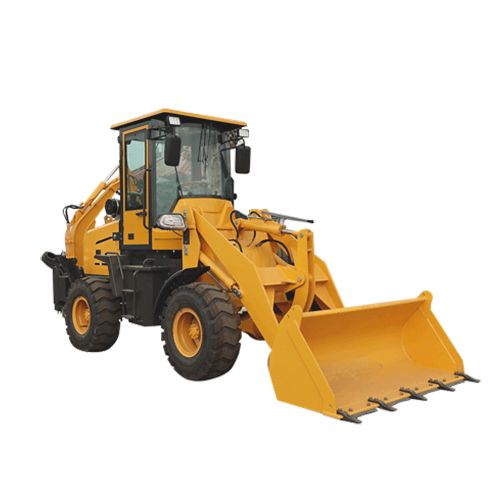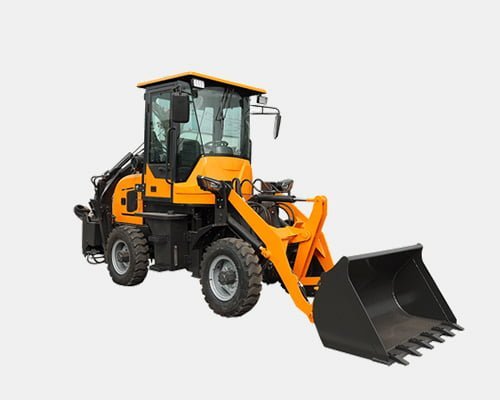Introduction

When considering purchasing a compact wheel loader, it’s crucial to understand the key features that define the quality and performance of these versatile machines. Whether for construction, landscaping, agriculture, or other applications, selecting the right compact wheel loader can significantly impact efficiency and productivity. In this comprehensive guide, we’ll explore the essential features to consider when buying a compact wheel loader to ensure you make an informed decision.
Engine Power and Performance
The engine serves as the powerhouse of a compact wheel loader, dictating its overall performance and capabilities. When evaluating different models for purchase, it’s essential to delve deeper into specific engine characteristics to ensure the machine meets your operational needs while optimizing efficiency and cost-effectiveness.
First and foremost, engine horsepower stands as a crucial factor to assess when buying a compact wheel loader. Horsepower directly correlates with the machine’s ability to perform tasks efficiently, particularly when it comes to tasks requiring significant power, such as lifting heavy loads or operating attachments. Higher horsepower ratings typically translate to enhanced performance, allowing the loader to tackle demanding tasks with ease.
Additionally, torque plays a pivotal role in the machine’s overall power delivery and performance. Unlike horsepower, which measures the engine’s maximum output, torque represents the engine’s rotational force, influencing the loader’s ability to overcome resistance and maintain consistent power throughout various operating conditions. Opting for a model with ample torque ensures robust performance, especially when handling tough materials or navigating challenging terrain.
Loader Capacity and Lift Height
Compact wheel loaders are available in a diverse range of sizes and configurations, each tailored to specific applications and operational requirements. When considering a purchase, it’s essential to thoroughly assess your needs based on the type and volume of materials you anticipate handling in your daily operations.
One of the primary considerations is the loader capacity, which refers to the maximum amount of material the loader can lift and carry. Compact wheel loaders come with varying capacity ratings, ranging from smaller models designed for light-duty tasks to larger machines capable of handling heavy loads. Assessing your workload and material handling requirements is crucial in determining the appropriate loader capacity for your operations.
Similarly, lift height plays a significant role in the versatility and functionality of compact wheel loaders. Lift height refers to the maximum height to which the loader’s arms can raise a loaded bucket or attachment. Different applications may require varying lift heights, depending on factors such as loading and unloading requirements, stacking capabilities, and clearance limitations. Evaluate your specific lifting needs to ensure the chosen loader offers sufficient lift height to accommodate your tasks effectively.
Moreover, consider the overall size and maneuverability of the compact wheel loader in relation to your work environment. Compact wheel loaders are prized for their agility and versatility in confined spaces, making them ideal for navigating tight job sites and congested areas. However, larger models may offer increased stability and lifting capacity at the expense of maneuverability in tight spaces. Assessing the available workspace and access constraints will help determine the most suitable size and configuration of the loader for your operations.
Versatility and Attachment Compatibility
One of the defining characteristics of compact wheel loaders is their exceptional versatility, which stems from their compatibility with a wide array of attachments. When considering a purchase, it’s essential to thoroughly evaluate the loader’s compatibility with various attachments to ensure it meets your diverse operational needs.
First and foremost, assess the loader’s compatibility with buckets, which are among the most commonly used attachments for compact wheel loaders. Different bucket types, such as general purpose buckets, high-capacity buckets, and multipurpose buckets, offer distinct functionalities tailored to specific tasks, such as material loading, grading, and dumping. Ensure that the chosen loader can accommodate a range of bucket sizes and types to facilitate efficient material handling operations.
Additionally, consider the compatibility of the loader with fork attachments, which are indispensable for lifting and transporting palletized materials and bulky items. Fork attachments allow compact wheel loaders to perform tasks such as loading and unloading pallets, transporting bulk materials, and handling oversized objects with precision and ease. Choose a model that offers robust fork attachment options to enhance versatility and productivity in material handling applications.
Furthermore, evaluate the loader’s compatibility with grapple attachments, which are ideal for handling loose materials such as brush, debris, logs, and demolition waste. Grapple attachments enable compact wheel loaders to grasp and secure materials securely, facilitating efficient loading, transport, and disposal operations. Look for a loader that supports various grapple types, including root grapples, rock grapples, and industrial grapples, to accommodate diverse material handling tasks effectively.
In summary, when selecting a compact wheel loader, prioritize compatibility with a diverse range of attachments to maximize versatility and productivity in your operations. By choosing a loader that offers extensive attachment options, you can tackle diverse tasks with ease and efficiency, enhancing overall operational efficiency and profitability.
Operator Comfort and Safety Features
Operator comfort and safety are paramount when operating compact wheel loaders. Look for features such as a spacious and ergonomic cab, adjustable seating, and intuitive controls to enhance operator comfort and productivity. Additionally, prioritize safety features such as rollover protection systems (ROPS), seat belts, and visibility enhancements to ensure operator safety on the job site.
| Feature | Description |
|---|---|
| Spacious and ergonomic cab | Provides ample space for the operator and designed with ergonomic considerations for comfort. |
| Adjustable seating | Allows operators to customize seating position for optimal comfort during long hours of operation. |
| Intuitive controls | Simplified control layout and user-friendly interface to enhance ease of operation. |
| Rollover protection systems (ROPS) | Essential safety feature designed to protect operators in the event of a machine rollover. |
| Seat belts | Ensures operator restraint and safety in case of sudden stops or accidents. |
| Visibility enhancements | Features such as large windows, mirrors, and camera systems to improve visibility around the machine. |
Maintenance and Serviceability

Ensuring efficient maintenance and serviceability is crucial for optimizing the longevity and performance of compact wheel loaders. When considering a purchase, thoroughly evaluate the accessibility of maintenance points, including filters, fluids, and grease points, to streamline maintenance procedures and minimize downtime and associated costs.
Filters Accessibility: Assess the ease of access to filters, including air, oil, fuel, and hydraulic filters. A model with conveniently located filter access points allows for quick and hassle-free filter replacement, reducing downtime during routine maintenance.
Fluids Checkpoints: Evaluate the accessibility of fluid checkpoints, such as engine oil, coolant, and hydraulic fluid reservoirs. Opt for a loader with clearly marked fluid checkpoints and easily accessible fill points to facilitate regular fluid level checks and top-ups, ensuring optimal performance and longevity of vital components.
Grease Points Accessibility: Consider the accessibility of grease points throughout the loader’s components, including pivot points, joints, and articulation areas. Choose a model with strategically located grease points and accessible grease fittings to simplify lubrication tasks and minimize the risk of missed maintenance intervals.
Simplified Maintenance Procedures: Look for a compact wheel loader that features simplified maintenance procedures, such as tool-less access panels, quick-release fasteners, and standardized components. Streamlined maintenance procedures reduce the time and effort required for routine servicing, allowing operators to maximize uptime and productivity on the job site.
Conclusion
Selecting the right compact wheel loader is a critical decision that can impact the success of your operations. By considering key features such as engine power, loader capacity, versatility, operator comfort, and maintenance requirements, you can make an informed choice that meets your needs and maximizes productivity on the job site.
FAQs
What is the typical lifespan of a compact wheel loader?
The lifespan of a compact wheel loader can vary depending on factors such as usage, maintenance, and operating conditions. With proper care and maintenance, a well-maintained compact wheel loader can last for many years, often exceeding 10,000 operational hours.
Can compact wheel loaders be used for snow removal?
Yes, compact wheel loaders are versatile machines that can be equipped with snow removal attachments such as snow blades, snow pushers, and snow blowers. These attachments enable compact wheel loaders to efficiently clear snow from roads, parking lots, sidewalks, and other areas.
What are the advantages of purchasing a new compact wheel loader versus a used one?
Purchasing a new compact wheel loader offers several advantages, including the latest technology, warranty coverage, and potentially higher resale value. However, buying a used compact wheel loader may be more cost-effective upfront and could still offer reliable performance with proper maintenance. It ultimately depends on your budget and specific requirements.

